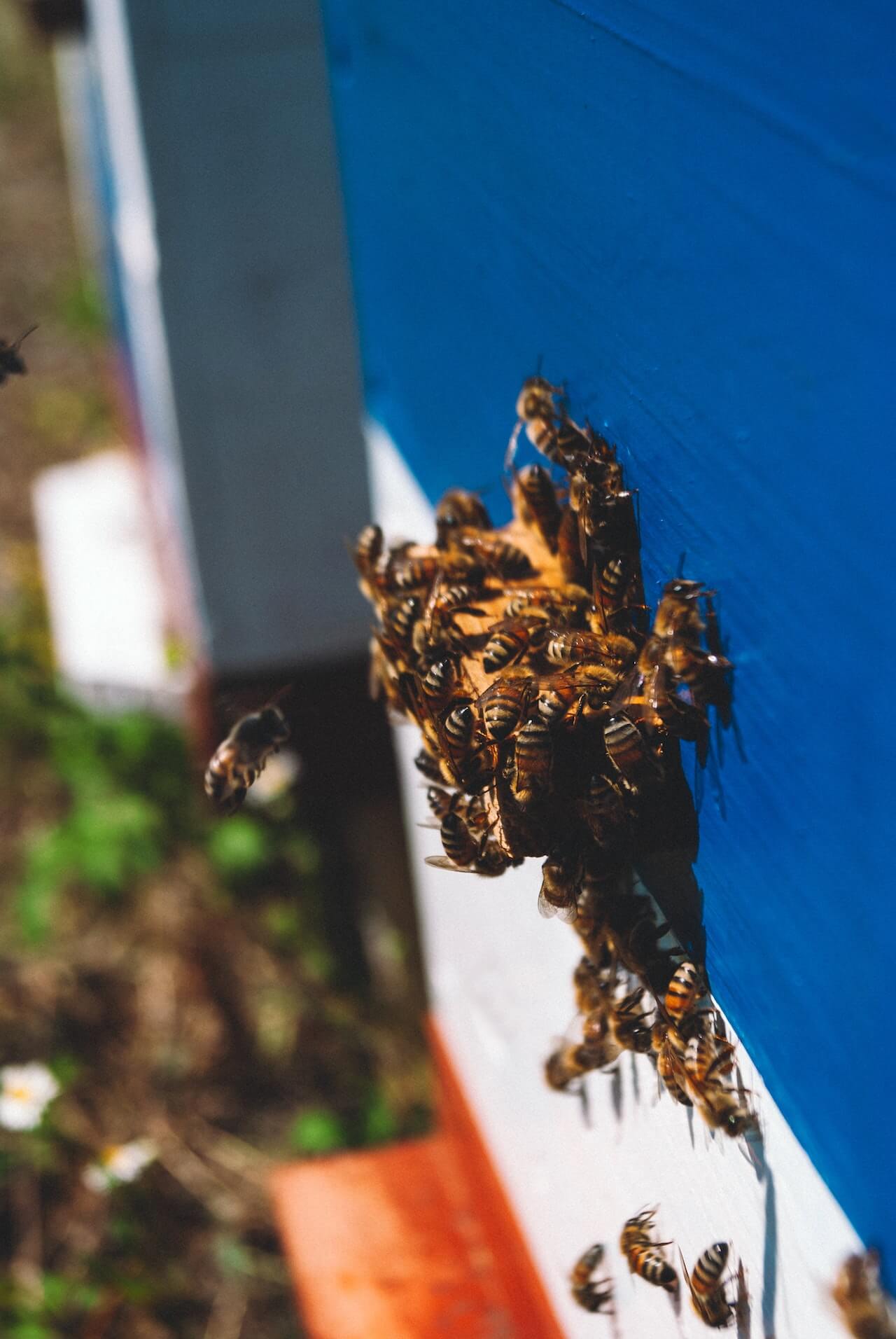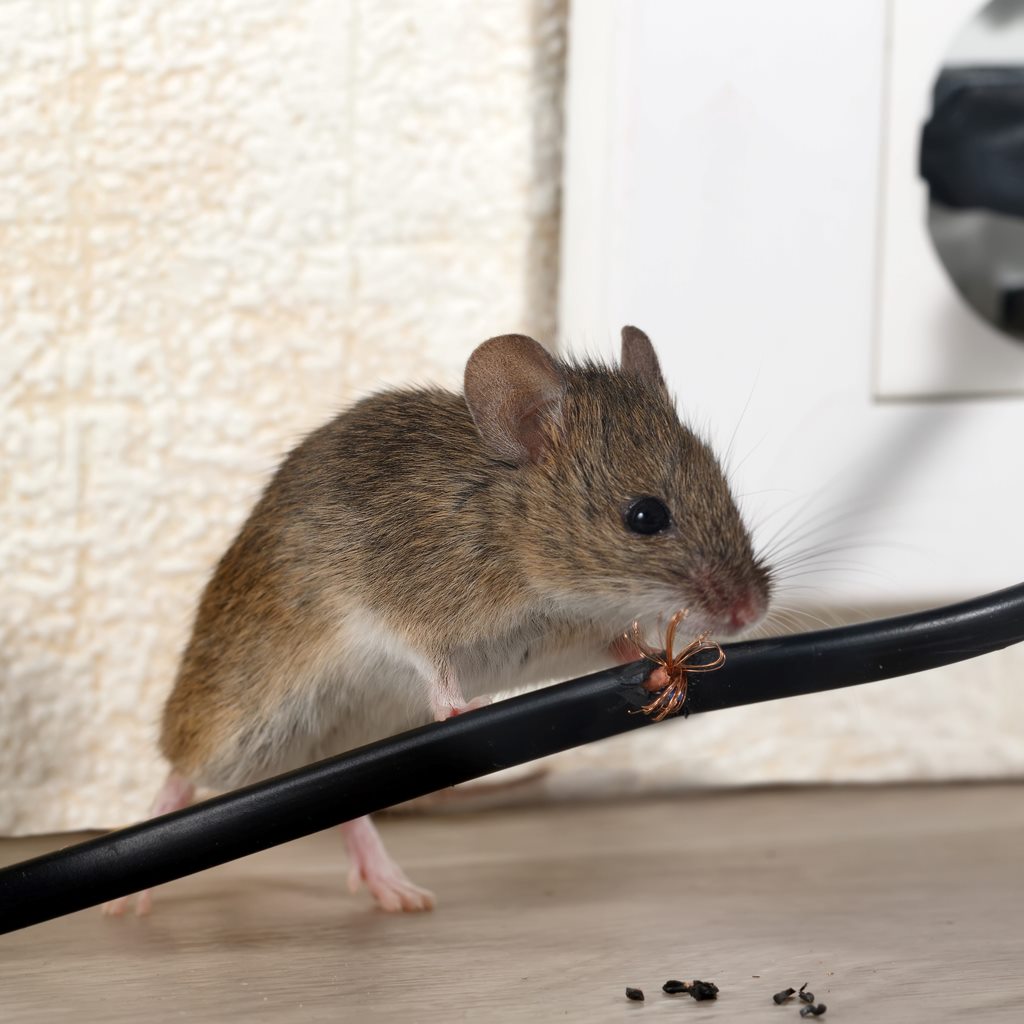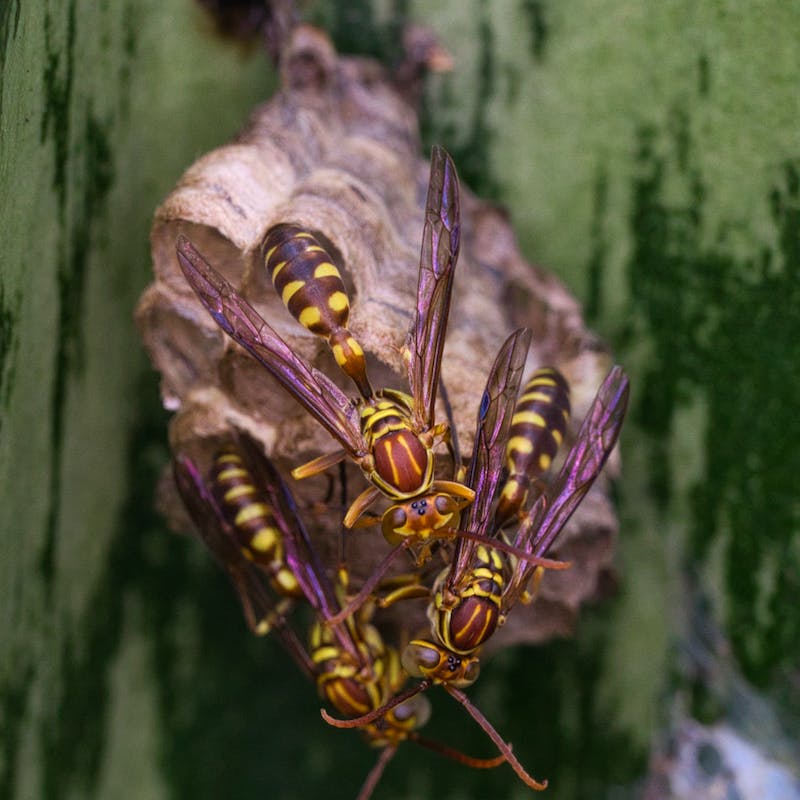
22 Jun 2023 | Trifecta Pest Solutions (UK) Ltd
Bees in walls can cause problems including structural damage and the potential for getting stung. So what do you do if you think there are bees nesting in house walls on your property?
In this article, I discuss how to get rid of bees in the wall cavity of your house and the best course of action to take. This typically involves relocation by local beekeepers or professional removal from a pest company using methods like the bee trap-out or bee cut-out.
What Type of Bees are Nested in Your Wall?
Before any action is taken, you must know the type of bee as this allows you to determine the presence and potential size of the colony and the scope for damage.
If possible, knowing how long the bees have been in your walls can really help too as this can point towards the establishment of things like a honeycomb structure. The four main bee types in the UK operate differently and this can affect the scope of the removal:
- Honey Bee
- Bumblebee
- Carpenter Bee
- Mason Bee
The honey bee is possibly the worst offender as they operate in huge colonies and can create large honeycomb structures inside your walls which can cause damage and they can be aggressive if their colony is disturbed,
Bumblebees have much smaller colonies and don’t produce any honeycombs, but instead have smaller clusters of nests. Bumblebees should not cause structural damage and they are generally not aggressive unless threatened.
Carpenter bees are rarer in wall cavities and they prefer to lay their eggs in holes in wood. They can cause severe damage to wooden structures such as cavity wall frames but they are usually not aggressive and rarely sting.
Lastly, the diligent mason is solitary and they create small nests in wall cavities from mud or other natural debris. They cause minimum damage as they typically bury into old mortar with a single hole and are usually non-aggressive.
Relocate to Local Beekeepers
One of the first options to try is to contact local beekeepers in your area. Depending on the type of bees nest in house wall, a beekeeper may be thrilled at the idea of relocating the bees for you and if they do this as a hobby they may even do it free of charge. This is always a great starting point as you then know that the bees will be treated ethically and their colony will survive.
How to Get Rid of Bees in a Wall?
If no humble beekeepers come forward, bee nest removal is best left to the professionals. It can be dangerous and complex work and without the correct equipment and know-how, you could get hurt or cause damage to your walls. To give you a little insight into the process, I explain three common bee removal techniques below:
- Bee cut-out
- Bee trap-out
- Bee vacuum
The bee cut-out involves literally cutting out bricks in your wall cavity or some part of the wall so that the honeycomb or nest can be removed and relocated. Don’t worry - this sounds destructive, but professionals make sure only the minimum is removed, and that everything is replaced and sealed afterward.
The bee trap-out method can be effective too. With this process, you are essentially creating a one-way enclosure outside your wall cavity so the bees can fly out, but not get back in. Outside, a secondary hive is set up that the bees will hopefully move to - you’re basically the removal firm!
There is also such a thing as a bee vacuum too and this isn’t as horrific as it sounds! Bee vacuums are specially designed with a much lower suction power so that the bees are gently sucked out of the wall cavity without causing them harm.
Read More: How to Get Rid of Bees Ethically?
Conclusion
Don’t worry - it is possible to get rid of these glorious insects from your house with professional help. And that is the main point - I don’t recommend trying any of the above methods yourself as there are too many unknowns and potential to harm both yourself and the bee colony.
Professional pest removers have the knowledge and equipment to tackle bee nest removal safely using methods like trap-outs or cut-outs so that the hive can be relocated and your brickwork remains in great condition.
Frequently Asked Questions
How long do bees stay in walls?
This depends on the type of bee, the colony size, and the availability of entrances and exits. If sealed in, bees will typically only survive for two weeks, but with proper access, they can stay in walls for months.
Do bees damage walls?
Yes! They can damage your walls in numerous ways including staining, damage to insulation and woodwork, structural pressure, and damage to brickwork and masonry.
Can you smoke bees out of a wall?
It is possible but it is not advisable. Smoking inside a wall cavity can potentially force the bees further into your walls and thus make them more difficult to remove. There is also no guarantee that the smoke will not cause damage to your interior decorating if it escapes.


